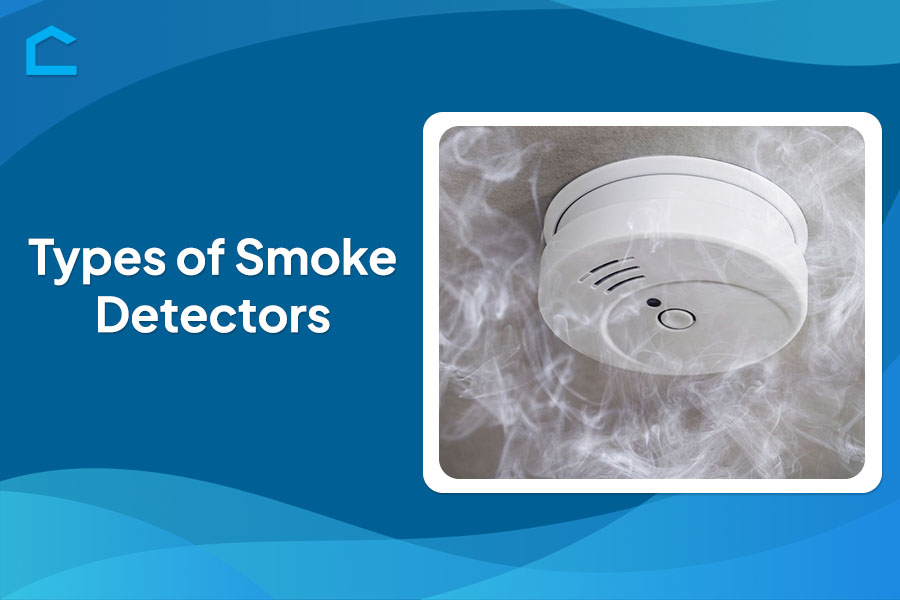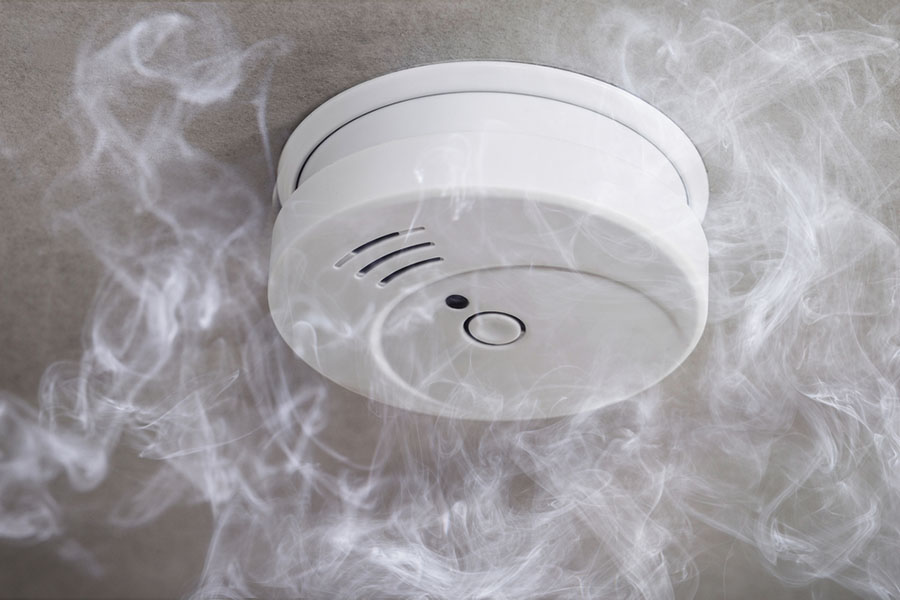Types of Smoke Detectors

Smoke detectors are essential safety devices designed to alert occupants to the presence of smoke, a primary fire indicator. They are crucial in homes and businesses, providing early warnings that may save lives and reduce property damage. Smoke detectors come in various types, each utilizing different technologies to detect smoke and fire.
In this article, we will explore the primary types of smoke detectors. We will delve into how each type operates, their specific advantages, and the best scenarios for their use.
Join us as we explore various types of smoke detectors and how they work to help you ensure the safety of your home and family!

Types of Smoke Detectors
Ionization smoke detectors
Ionization smoke detectors use a small amount of radioactive material to ionize the air inside. This process gives air particles an electrical charge. When smoke enters, it disturbs the charged air, setting off the alarm.
The presence of smoke disrupts the flow of ions, altering the electrical current and activating the alarm. These detectors excel at detecting fast-burning fires with significant flames.
However, they can sometimes trigger false alarms from cooking smoke or steam. Although the amount of radioactive material is very low, this is still a concern for some people.
Ionization detectors are also generally less expensive than other types and don’t require much maintenance beyond regular battery changes. They have a limited lifespan of around seven to 10 years before needing replacement.
Photoelectric smoke detectors
Another common type is the photoelectric smoke detector. It relies on a light source and a sensor. When smoke particles enter the detector, they scatter or block the light beam. This triggers the sensor to sound the alarm.
Photoelectric detectors excel at detecting smoldering fires that produce lots of smoke and start slowly. Compared to ionization detectors, they are less prone to false alarms from cooking. However, they may react slightly slower to fast-flaming fires.
These alarms are ideal for living areas and places where smoldering fires are a concern. They require minimal maintenance but need regular battery changes. Like ionization models, they typically need replacement every seven to 10 years.
Dual-sensor smoke detectors
Dual-sensor smoke detectors combine both ionization and photoelectric technologies into one unit. This way, they can detect different types of fires – both fast-flaming and smoldering. Having two sensors also helps reduce false alarms.
Yet, it’s worth noting that dual-sensor detectors usually have a higher price tag than their single-sensor counterparts. But the added protection they offer might justify the extra expense. In fact, these detectors excel at catching fires early while keeping false alarms to a minimum.
Keep in mind, though, that even with their advanced technology, dual-sensor detectors still need regular battery changes and replacement every seven to 10 years. It’s a small maintenance price to pay for their heightened safety.

Combination smoke and carbon monoxide detectors
Combination detectors serve a dual purpose by detecting smoke particles and carbon monoxide gas, ensuring protection from fires and this deadly gas. This convenience of addressing multiple threats in one unit is beneficial.
However, these detectors can be pricier and may require replacing the entire unit when either sensor expires. They are particularly suitable for homes with fuel-burning appliances such as furnaces, offering comprehensive safety in a single device.
Smart smoke detectors
Smart smoke detectors are the newest type available. They connect directly to your home’s Wi-Fi network, allowing you to receive instant alerts on your smartphone or other connected devices if the alarm is triggered. This feature is particularly helpful for hard of hearing individuals, as some models also provide voice alerts.
These smart detectors can even sync with other devices in your smart home setup. However, there are a few things to consider. You’ll need a stable Wi-Fi connection and compatible smart devices to enjoy these extra features.
Although smart detectors are more expensive than basic smoke alarms, their remote notification capabilities greatly enhance safety, especially for frequent travelers. Keep in mind that setting them up can be more complex than traditional detectors.

Conclusion
Understanding the different types of smoke detectors is crucial for ensuring the safety of your home and family. Smoke detectors, whether ionization, photoelectric, dual-sensor, combination, or smart, each play a vital role in detecting smoke and fires early, providing critical time for evacuation.
Choosing the right type involves considering factors like your home’s layout, potential fire sources, and budget. Each type offers unique advantages, from detecting fast-burning fires to integrating with smart home systems for remote alerts.
Now, you can enhance your home’s safety against fire emergencies. Choose wisely!
